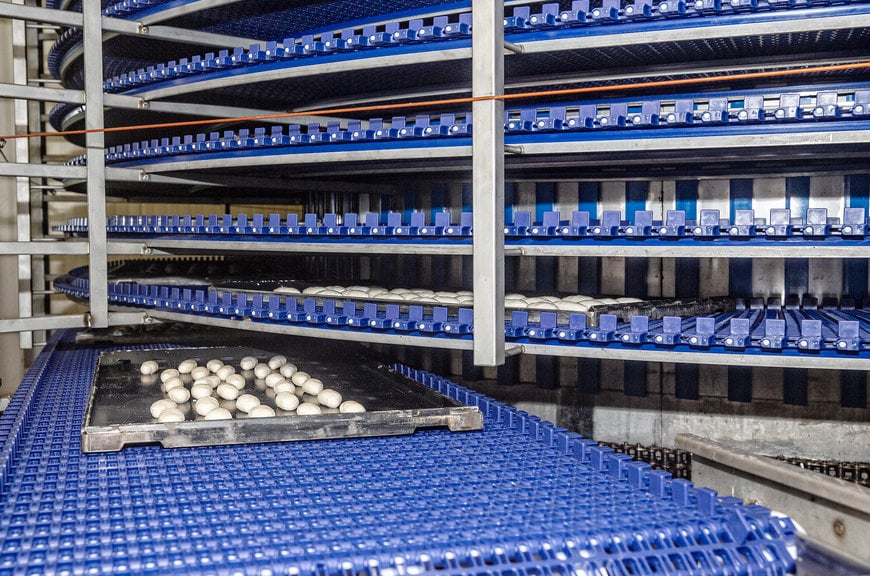www.magazine-industry-usa.com
10
'23
Written on Modified on
Conveying elegance with wireless telemetry
By Matthew Youngs, marketing manager at wireless telemetry specialist Mantracourt, discusses how to implement preventative maintenance programmes using wireless telemetry and shares an example where the company helped Habasit to do this in a spiral food conveyor system.

When it comes to industrial equipment, emergency repairs are known for extending unplanned downtime and for harming plant productivity. Therefore, it is best to find ways to identify faults early so fixes can be made with minimal disruption and tackle downtime problems before they occur.
While equipment failure is generally inevitable, it should not take plant managers by surprise and cause significant levels of unplanned downtime, slashing both plant productivity and profit along the way. Unscheduled downtime has been shown to cost the global manufacturing industries approximately $50bn per year, emphasising the need to proactively identify potential problems quickly and implement fixes before they cause costly downtime.
A preventative maintenance programme allows operators and engineers to monitor ongoing system condition and proactively carry out maintenance when parts begin to show signs of wear. While machine breakdowns are an accepted part of factory life, a preventative programme dramatically reduces their occurrences.
One way of implementing such a programme is by installing a wireless telemetry system with 24/7 monitoring capabilities, providing all the operational insight needed to make effective maintenance decision. For example, these systems can be used to monitor key parameters such as temperature, pressure, humidity, tension and vibration. Dramatic changes in any of these parameters are usually indicative of a problem and 24/7 monitoring allows users to spot these right away before they cause significant damage.
The sensor inside a conveyor
When Habasit, a leading conveyor belt specialist, wanted to embed a wireless force-sensing link in one of its spiral food conveyor systems to improve preventative maintenance possibilities, it engaged Mantracourt to help. Using sensors in a spiral conveyor application is challenging, so Mantracourt’s team had to get creative to engineer an effective solution.
The traditional approach involves a maintenance engineer visiting the site to carry out repairs and upgrades. During these visits, the engineer will also check tension using a load-cell that clips onto the surface of the belt and measures the force between the modular links.
However, this approach is limited as these checks are only done periodically as part of a scheduled maintenance programme and it also involves stopping the conveyor. Furthermore, the load cell that measures tension only works on some parts of the conveyor system and can’t fit through tight spaces, so it provides a limited picture of tension across the whole system.
Mantracourt developed a novel system based on its T24 technology with some customised circuitry for improved power management. It also used a novel antenna system, using 2.4 GHz radio and a proprietary protocol with the language written by Mantracourt.
A key advantage of the protocol that was developed is that it allows monitoring of multiple transmissions between the sensors and the base station. This gave Habasit the ability to monitor one-to-one, one-to-many, many-to-one and many-to-many devices. Ultimately, this allows a single operator to use one device to monitor a single link, or multiple operators can use multiple devices to monitor multiple links.
The final system was embedded into the spiral food belt to monitor belt tension on an ongoing basis. It allows users to perform 24/7 diagnostics using Mantracourt’s SensorSpace® cloud-based monitoring platform, and implement a preventative maintenance programme, reducing any unplanned downtime and minimising ongoing maintenance costs.
To find out more about SensorSpace ®, visit about sensorspace.com.
www.mantracourt.com

